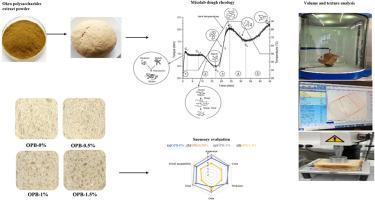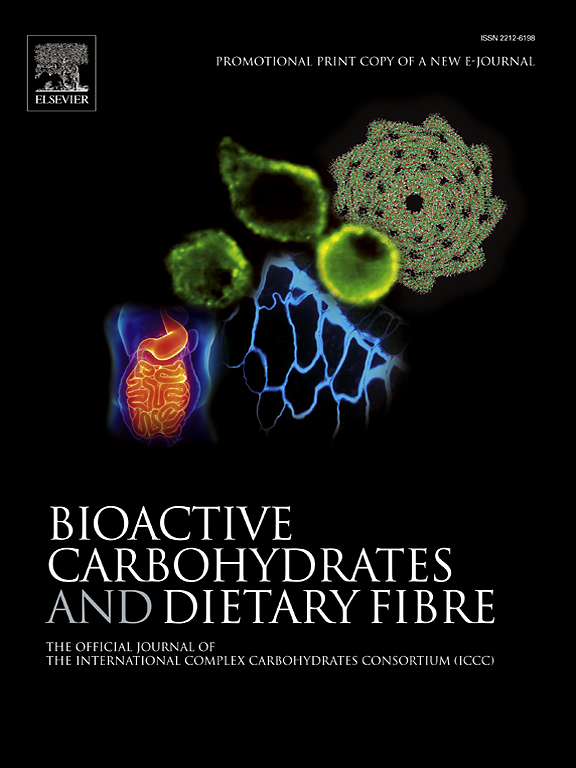秋葵多糖提取粉对小麦面包混合物属性、理化特性及淀粉体外消化率的影响
IF 3.6
引用次数: 0
摘要
研究了秋葵多糖提取液对小麦面包面团流变学特性、质构、抗氧化特性和体外淀粉消化特性的影响。在小麦粉中分别加入浓度为0.5%、1%和1.5%的秋葵多糖提取粉(OPEP),制备出不同的面包。面包中OPEP的加入对扭矩尺度混合实验参数C2、C3和C5有相当大的影响。此外,它的加入导致面团吸水能力的增加和面团稳定时间的缩短。含有不同浓度OPEP的面包含水量、蛋白质、粗纤维和灰分都有所增加。然而,小麦粉的下降数量有所减少。此外,OPEP显著影响了面包的体积、质地和颜色。总体而言,贮藏第4天面包硬度和水分活性降低。OPEP的加入增加了面包屑的颜色参数。地壳的颜色值基本未受影响。感官属性显示,面包富含1%的OPEP达到最高水平的整体可接受性。结果还表明,OPEP面包的加入提高了其抗氧化剂含量。添加OPEP对小麦面包中快速消化淀粉(RDS)和抗性淀粉(RS)含量有显著影响。因此,这项调查的结果可能为烘焙产品工业生产新标准的制定提供潜在的理论支持。本文章由计算机程序翻译,如有差异,请以英文原文为准。

Effect of okra polysaccharides extract powder on mixolab attributes, physicochemical characteristics and in-vitro starch digestibility of wheat bread
The objective of this study was to assess the effect of extracted okra polysaccharides on the dough rheological properties, texture, antioxidant properties, and in-vitro starch digestion attributes of wheat bread. Different breads were prepared by incorporating okra polysaccharides extract powder (OPEP) at concentrations of 0.5 %, 1 %, and 1.5 % into wheat flour. The addition of OPEP in bread had a considerable effect on the torque-scale mixolab parameters C2, C3, and C5. Moreover, its incorporation led to an increase in the water absorption capacity and decreased dough stability time. Breads with varying concentrations of OPEP exhibited elevated levels of moisture content, protein, crude fiber and ash. However, the falling number for wheat flour decreased. Further, OPEP significantly impacted the volume, texture, and color of the bread. Overall, the bread hardness and water activity were lower on the 4th day of storage. The addition of OPEP increased the crumb color parameters. The color values of the crust remained mostly unaffected. Sensory attributes revealed that bread enriched with 1 % OPEP achieved the highest level of overall acceptability. Results also indicated that the incorporation of OPEP bread increased its antioxidant content. Rapidly digestible starch (RDS) and resistant starch (RS) contents were significantly affected by the addition of OPEP in wheat bread. Therefore, the findings of this investigation may potentially provide theoretical support for the development of a new standard regarding the industrial production of baked products.
求助全文
通过发布文献求助,成功后即可免费获取论文全文。
去求助
来源期刊

Bioactive Carbohydrates and Dietary Fibre
Agricultural and Biological Sciences-Food Science
CiteScore
6.00
自引率
0.00%
发文量
38
期刊介绍:
 求助内容:
求助内容: 应助结果提醒方式:
应助结果提醒方式:


